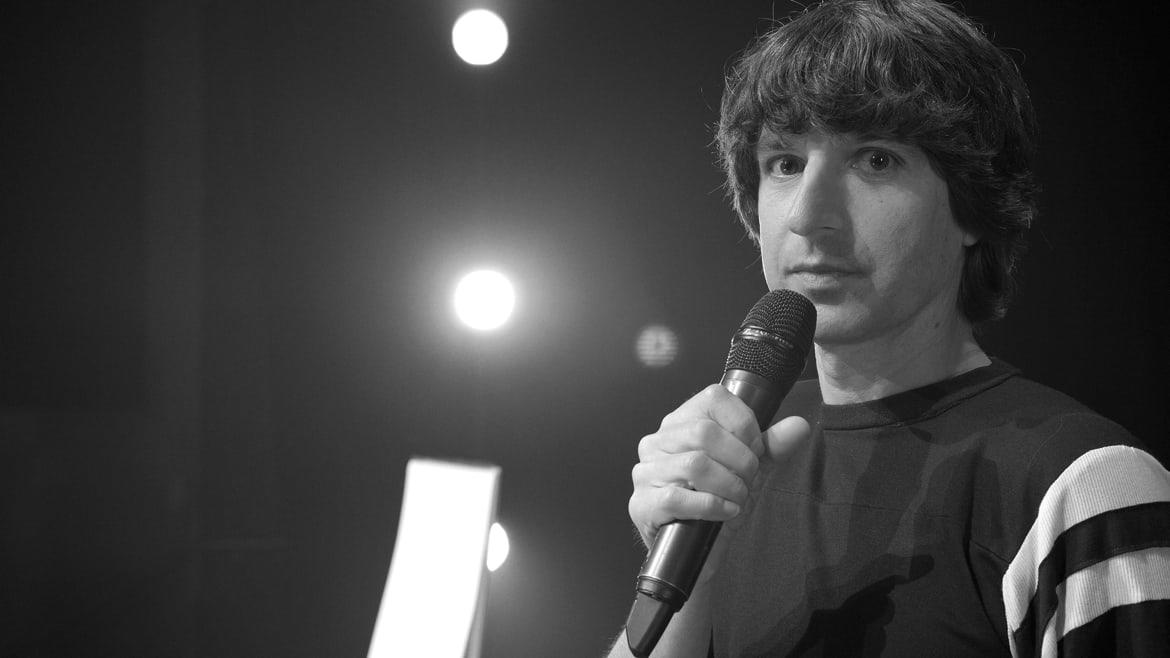Demetri Martin Made a Netflix Hour That’s Actually ‘Special’

- Oops!Something went wrong.Please try again later.
In our current age of decision fatigue, Netflix comedy specials have become one of the streaming giant’s most saturated genres. With virtually (pardon the pun) nothing to distinguish its specials beyond standard titles usually following a [comedian’s name followed by a generic verb/noun] format, it can be difficult to know where to start. Many of us fall into the same trap every time we open Netflix’s comedy page: Watching the latest special from the same mainstream comedians we have been watching for years.
It can be high-risk for comedians to break the mold and warp the conventions of comedy. It can also be high-reward, with specials like Hannah Gadsby’s Nanette or Bo Burnham’s Inside receiving critical acclaim. With a pandemic that shut down live performances, Burnham in particular found a novel way to engage fans with a style that enhances the experience for viewers. It far exceeds the typical upload of a live show recording that we have come to expect from Netflix specials; a format that can feel like a lazy cash grab for already-wildly-successful comedians.
This re-imagining of comedy forms the basis of Demetri Martin’s Demetri Deconstructed, with a black-and-white trailer that immediately stood out among the neon signs and primary colors of other stand up specials. Combined with a jazz theme and plenty of Wes Anderson-esque symmetry, Martin’s special feels like something that was designed with purpose: streamlined for streaming as comedy specials should be, rather than left as a lucrative afterthought following a money-making tour.
At times the rigid structure feels more like theater, with bold title cards introducing distinct segments. In this way, it can mirror the way TikTok comedians have seemingly mastered the art of short, self-contained segments perfect for the endless scroll. But where TikTok comedians seem to rely almost entirely on crowd work, Martin restricts this to just one section of his hour-long special—aptly introduced as “Crowd Work.” Unlike TikTok comedians who continually flog this dying horse, Martin doesn’t really do crowd work—he asks where everyone is from, no one replies, and the segment ends as abruptly as it began. He refuses to give in to gimmicks or cheapen his comedy through taking shots at the very people supporting him.
Some of these segments are more abstract than others. One is described as the “horse portion” while another features observations on toothpaste. Jokes about the mundane human experience underpin the special, maintaining its sense of timelessness as Martin remains relatively apolitical—a refreshing perspective in the back-and-forth culture war that seems to be dominating mainstream comedy specials at the moment.
The main challenge facing Martin is one he explicitly states early on: “It’s like you can’t grab people’s attention.” Burnham also reflects on this in his Inside outtakes with a physical comedy sketch ironically titled, “Be Yourself.” With TikTok reducing our attention spans to five minutes at best, it’s become more difficult than ever for comedians to keep viewers entertained for a full one-hour special. The best way to fix the problem? Get creative, Martin’s special suggests.
Meta-comedy often risks falling into a pseudo-intellectual void of unwatchability. For Martin, however, this quickly becomes one of the special’s most engaging features. It is achieved in a range of ways, from split screens with multiple simultaneous shots, to on-screen writing for additional jokes that presumably didn’t fit into the show’s runtime but were clearly too good to cut, often leading to more laugh-out-loud moments than the jokes that made it into the special itself.
Matt Rife Wants Men to Like Him—So He Punches Down at Women
At times, it is difficult to tell exactly who, or where, the audience is as Martin merges the in-person audience with the at-home one. As Netflix viewers, it’s almost impossible to predict how some of these jokes were conveyed in-person, while those who saw the show live might get more from a rewatch at home. Martin trusts his audience enough to know when he is being funny—it is his job after all. And the at-home audience isn’t being instructed by the live audience when we should laugh.
Martin isn’t afraid to experiment with other art forms either, with one of his best bits coming in the form of a ventriloquism act made from paper. He manages to be comedic genius, ventriloquist, and origami master in one as he pretends to be a demon from hell to dissect some of life’s most annoying inventions. This also allows him to experiment for the first time with some social commentary, criticizing social media as something that makes you “a shittier version of yourself” as the audio shifts to a far deeper tone, reverberating from the depths of hell.
While not all of Martin’s jokes land (such is the risk of an experimental approach to comedy), he achieves his loftier goal of maintaining viewer attention, right until the final cliff-hanging moments. It is the perfect set-up for his next hour, the second half of his two-special deal with Netflix.
He’s already preparing audiences to hold their attention for whatever is coming next. But even on its own, Demetri Deconstructed lands the comedian in the Netflix special hall of fame, successfully differentiating himself with comedy that feels truly “special.”
How Death Pushed Demetri Martin Into Comedy
Get the Daily Beast's biggest scoops and scandals delivered right to your inbox. Sign up now.
Stay informed and gain unlimited access to the Daily Beast's unmatched reporting. Subscribe now.

